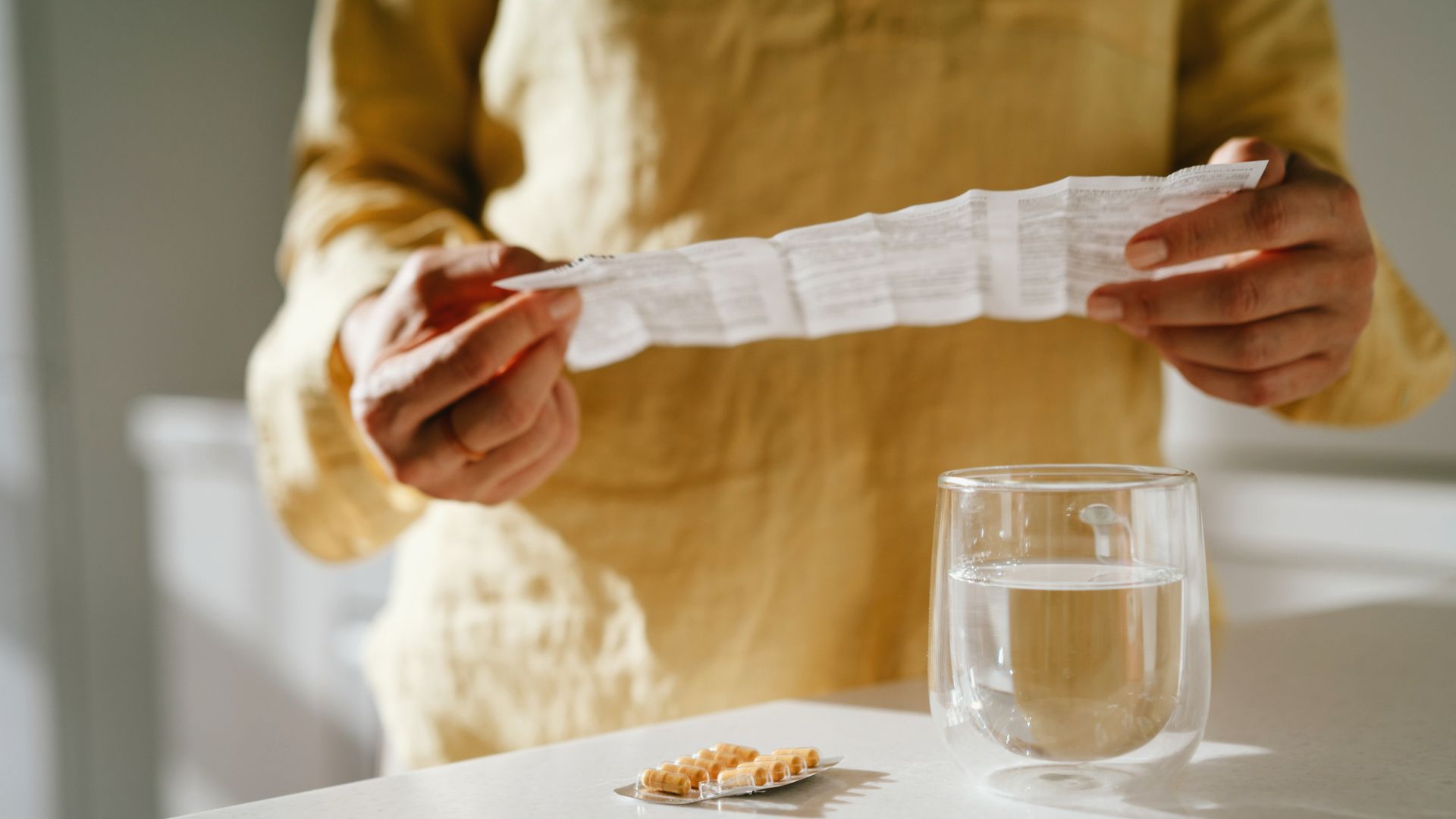
Given that menopause officially occurs 12 months after your last period, it's understandably concerning if you're seeing blood again - even if it's just light spotting. There are many causes of light spotting after menopause and while it can happen to anyone and is fairly common, it's always worth speaking to a doctor about.
While some bleeding during perimenopause is to be expected, any bleeding after menopause is known as postmenopause bleeding (PMB) - and is not normal. The causes can be benign and easily resolved, but even light spotting is a sign that something's up when you're postmenopausal.
"Anyone experiencing postmenopausal bleeding should get seen by a doctor. Even if it only happens once it needs to be checked out and it's not always a cause for alarm," says Dr Shirin Lakhani, a GP and women's health specialist. Here, woman&home speaks to several doctors to reveal the main causes of light spotting after menopause and what to do about it.
Causes of light spotting after menopause
1. Hormone changes
The ovaries make very little oestrogen after menopause but hormonal changes are still possible and can cause light blood spotting, says Dr Ashfaq Khan, a consultant obstetrician and gynaecologist.
"Hormonal fluctuations can occur due to factors like stress, certain medications, or underlying medical conditions," he says.
Just like in a pre-menopause menstrual cycle, high cortisol levels and mental health conditions such as depression, anxiety, and insomnia can affect hormones post-menopause.
2. Medications
If you've started taking any new medications recently, it's worth looking at the side effects on the leaflet.
"Changes in the dose of hormone therapy treatment (HRT) can lead to postmenopausal bleeding," Dr Lakhani says, as can some blood thinners and mental health medications.

3. Vaginal atrophy
Oestrogen is a hormone that contributes to skin thickness and the creation of collagen, the protein that makes up many of the body's tissues - including internal tissues. The decline of oestrogen during menopause can, unfortunately, have the opposite effect and cause thinning, drying, and inflammation of the vaginal walls, and a condition known as vaginal atrophy.
"Friction that may occur against [the walls] can lead to inflammation and break down of the tissue, which ultimately results in spotting or light bleeding after menopause," says Dr Tiffany Pham, an obstetrician and gynaecologist who works with Flo Health. "This is the most common reason for bleeding and occurs about 60% of the time."
Those experiencing vaginal dryness and atrophy might benefit from hormone therapy treatment (HRT), which can replace the oestrogen in the body that's in decline, lessening these symptoms. It won't be suitable for everyone but this is something else to discuss with your doctor at the appointment.
4. Infections
One of the other common causes of light spotting after menopause is infections, such as candida (otherwise known as a yeast infection), bacterial infections, or sexually transmitted diseases (STDs), says Dr Khan, the founder of Harley Street Gynaecology.
While these are all serious if they remain untreated, if diagnosed early, they can be nothing more than an uncomfortable inconvenience. Most infections can be treated at home with over-the-counter topical creams and/or antibiotics.
5. Abnormalities
While spotting after menopause can be an uncomfortable yeast infection for some people, one of the reasons it's so important to speak to your doctor - even if it only happens once - is that it can also be a sign of a serious problem.
"Spotting after menopause can sometimes be a sign of more serious issues such as uterine or cervical polyps, endometrial hyperplasia (thickening of the uterine lining), or even uterine or cervical cancer," says Dr Khan. "While less common, these conditions require medical attention."
If this is thought to be causing the spotting, your doctor or gynaecologist may do a physical exam, order blood tests, or do an ultrasound or a biopsy. From here, they can determine the causes and devise a treatment plan.
"Early detection and treatment of underlying conditions are essential for optimal health outcomes," he notes.
Is spotting normal during menopause?
No, any bleeding or spotting after menopause isn't normal, the experts agree, and you should always visit your doctor if you experience it even just once. "It's essential to consult a healthcare provider to determine the underlying cause," says Dr Khan.
It may be nothing to worry about. As Dr Pham says: "The most common reason for bleeding in menopause [vaginal atrophy] is typically benign, so it's not always a worrisome symptom."
Vaginal atrophy-related dryness and symptoms like itchy skin and pain during sex are very common - with around 50% of women who go through menopause thought to experience the issue - and are easily treated once diagnosed.
However, as noted, the more concerning causes are worth ruling out.
When to worry about spotting after menopause
You should see a doctor as soon as you notice any bleeding in the months or years after menopause, the experts say, but "especially if it persists or is accompanied by other symptoms such as pelvic pain, vaginal discharge, or bleeding during or after intercourse," says Dr Khan, as this is a sign of something more serious.
It's also important to see a doctor if:
- The spotting is persistent or recurrent.
- You're having heavy periods after 40.
- The bleeding is accompanied by clotting
- You experience pelvic pain or discomfort.
- You notice other concerning symptoms such as unexplained weight loss, fatigue, or changes in bowel or bladder habits.
Even if it is not blood spotting specifically, visit your doctor. "I would also recommend seeking advice if there is only a small amount of blood as well as pink or brown discharge," says Dr Lakhani.







